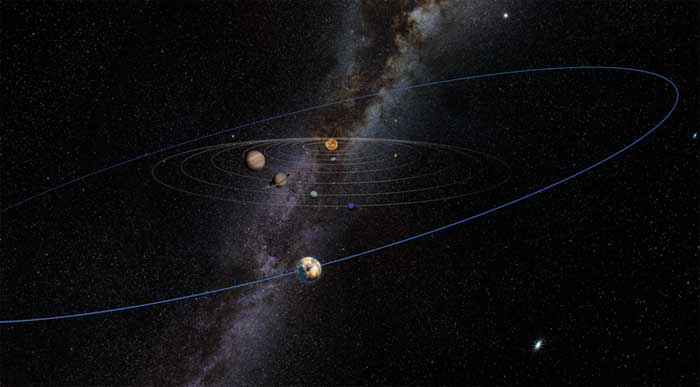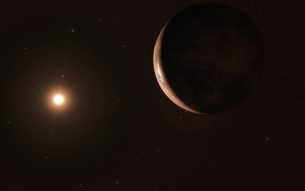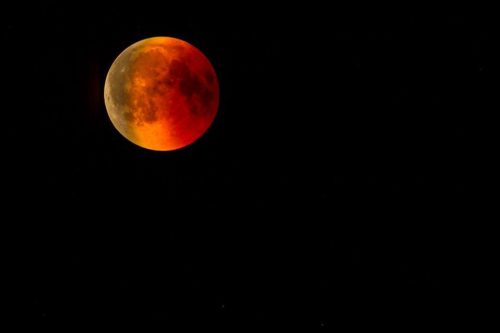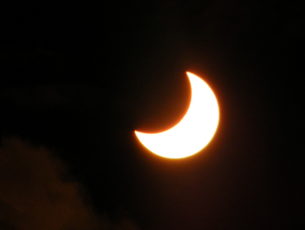
Planet Ten
Addio Planet Nine, Hello Planet Ten? Ai margini del Sistema solare, nella remota fascia di Kuiper, potrebbe esserci un nuovo pianeta. E’ stato chiamato provvisoriamente Planet Ten e, finora, nessuno l’ha mai visto.
Le tracce del corpo celeste sono state scoperte grazie all’influenza che esercita la sua forza gravitazionale sui piani orbitali di una serie di oggetti rocciosi collocati nella Fascia di Kuiper.
La ricerca è stata condotta dal Lunar & Planetary Laboratory dell’Università dell’Arizona (LPL)
Il Pianeta dovrebbe avere una massa compresa tra quella di Marte e quella della Terra e si troverebbe nell’area un pianeta in grado di cambiarne l’orbita. Questo fenomeno viene registrato ad una distanza compresa tra i 50 e le 80 unità astronomiche.
ARTICOLI CORRELATI:
- Risolto “forse” uno dei misteri di Planet Nine, ammesso che esista…
- Sensazionale: scoperto “Planet Nine”, un pianeta dieci volte più grande della Terra
La ricerca ha analizzato i movimenti di ben seimila oggetti collocati nella Fascia di Kuiper. Il corpo celeste sarebbe collocato ad una distanza intorno alle 60 unità astronomiche dal Sole e su un’orbita inclinata di otto gradi. Come detto gli esperti hanno escluso l’azione del cosiddetto Pianeta Nove, la cui massa sarebbe superiore mentre la collocazione sarebbe compresa tra le 500 e le 700 unità astronomiche.
Altri sono prudenti all’introduzione di nuovi mondi al sistema solare. “Ho dei dubbi sulla sua esistenza, è strano che un pianeta così vicino e così luminoso fosse rimasto inosservato“, dice Alessandro Morbidelli dell’Observatoire de la Côte d’Azur di Nizza, Francia, che suggerisce che il misterioso Planet Nine potrebbe rappresentare almeno una parte della deviazione.
Fonti: newscientist.com – space.com
Lo studio pubblicato su arXiv
The curiously warped mean plane of the Kuiper belt
We measured the mean plane of the Kuiper belt as a function of semi-major axis. For the classical Kuiper belt as a whole (the non-resonant objects in the semi-major axis range 42–48~au), we find a mean plane of inclination im=1.8∘+0.7∘−0.4∘ and longitude of ascending node Ωm=77∘+18∘−14∘ (in the J2000 ecliptic-equinox coordinate system), in accord with theoretical expectations of the secular effects of the known planets. With finer semi-major axis bins, we detect a statistically significant warp in the mean plane near semi-major axes 40–42~au. Linear secular theory predicts a warp near this location due to the ν18 nodal secular resonance, however the measured mean plane for the 40.3-42~au semi-major axis bin (just outside the ν18) is inclined ∼13∘ to the predicted plane, a nearly 3-σ discrepancy. For the more distant Kuiper belt objects of semi-major axes in the range 50–80~au, the expected mean plane is close to the invariable plane of the solar system, but the measured mean plane deviates greatly from this: it has inclination im=9.1∘+6.6∘−3.8∘ and longitude of ascending node Ωm=227∘+18∘−44∘. We estimate this deviation from the expected mean plane to be statistically significant at the ∼97−99% confidence level. We discuss several possible explanations for this deviation, including the possibility that a relatively close-in (a≲100~au), unseen small planetary-mass object in the outer solar system is responsible for the warping.













